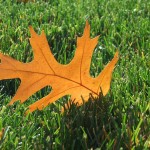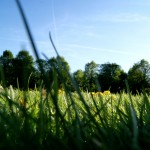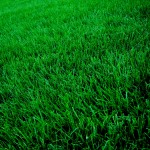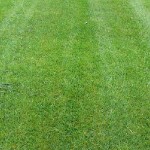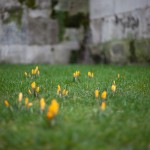
7 Easy Winter Lawn Care Tips for Raleigh, North Carolina, Homeowners
North Carolina, as well as several other states, has an official “Winter Weather Preparation Week.” The National Weather Service in Raleigh alerts the community that it’s time to get ready for winter.
There are tips for your home, such as making sure your heater is cleaned and inspected. Tips for your car such as having a bag of sand or kitty litter in your trunk if your tires lose traction. Even tips for what clothes you need to keep warm such as mittens and boots.
So what tips do they miss? Shouldn’t be hard to guess. You are, after all, on the Lawnstarter website. Right! They missed lawns. But Winter Weather Preparedness Week is in mid-December, and that’s way too late for tips on how to prepare your lawn for winter. So we’re going to take care of that right now.
1. Gradually decrease your lawn mower’s height
Photo: Flickr / Sir Mildred Pierce
In the fall, as the weather gets cooler, you’ll see fewer clippings when you mow the lawn. That’s a sign that grass growth is winding down. As you wind down on mowing, gradually set the mower blade lower, and for final mowing, have it at its lowest setting.
The ideal height for your winter grass is two inches. If it’s too long, it will mat and breed diseases such as snow mold. If it’s too short, it will be unable to manufacture and store the nutrients it needs for the winter.
2. Might as well aerate
Photo: Flickr / Gord Webster
After the final mowing, it’s a great time to aerate. It’s an easy job. Rent a self-propelled push lawn aerator from a garden center. The hollow tines on the aerator punch holes in the soil about six inches deep and extract plugs of dirt. The soil is then more receptive to oxygen, water, and nutrients.
3. Fertilize once in the fall
After you aerate, it’s a great time to fertilize. The soil is ready and able to receive all the nutrients it needs to green up in the spring. Even though grass growth slows down as the days get cooler, the roots and stems are in overdrive. They’ll gobble up that fertilizer that they need to grow stronger and deeper throughout the winter.
4. Treat your lawn’s bare spots
An all-in-one lawn repair mixture contains grass seed, special fertilizer, and organic mulch. Loosen the soil at the bare spots with a rake, apply a thick layer of the repair mixture, lightly pack it down. Water thoroughly every other day for two weeks.
5. Spot treat those pesky weeds
Weeds, just like the roots and stems of grass, are scarfing up everything they can in the fall to stash it away for the winter. They’re not real discriminating. They’ll also scarf up herbicides, and their greed will kill them. To spot treat weeds, use a small pressure sprayer to shoot the invaders with herbicide. There will be no sign of them in the spring.
6. Mulch the leaves on your lawn
Photo: Flickr / GreggMP
You need to clear the lawn of leaves lest they smother the grass. You can do a two-fer by using your mower to mulch your leaves: the leaves are no longer a danger (and unsightly), and mulched leaves are a natural resource of nutrients.
The leaves need to be minced. If you don’t have a mulching blade, you may have to run the lawn mower over them a few times. Mulch as soon as the leaves fall. They decompose more rapidly while the soil is still warm, and there is less strain on your mower than if you wait to do all the leaves at one time.
It’s best practice to wear goggles and a dust mask when mulching.
Warning: Don’t mulch pine needles. They will smother your lawn, not enrich it.
7. Protect your hoses and sprinklers
Water your lawn until the ground freezes, and then get right to taking care of your hoses and sprinkler system.
Disconnect your hoses and drain all the water from them. Wind them properly and store them in a dry area away from the freezing temperatures.
The last thing you want is a burst pipe in your sprinkler system. The damage it can do! The expense! It is an absolute must that you winterize your system. Doing it yourself involves turning off the water valve that supplies it, running the sprinkler timer through all of its cycles, and insulating the pipes that are above the ground.
If you are leery about doing it yourself, there are professionals who offer maintenance contracts. They will winterize your system and guarantee their work. Then they will check it in the spring so that you don’t have any unpleasant surprises when you first use it.
You can look at it as preparing your lawn for winter. Or you can look at it as preparing your lawn for a glorious greening up in the spring. It’s both.
Have additional questions about lawn care? Visit our Raleigh, NC lawn care page or share your thoughts in the comments section below.



